Melih Sener
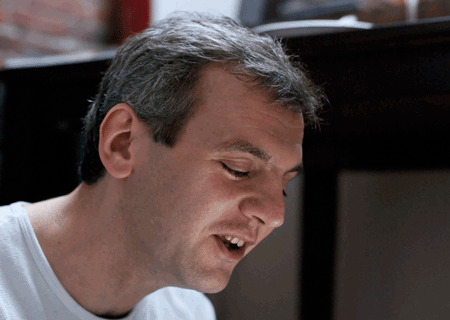
As of August 2022, I have joined Arizona State University, Biodesign Institute, working with
Abhi Singharoy,
Yuval Mazor,
Kevin Redding.
Meawhile, I maintain an appointment and collaboration with UIUC, Beckman Institute,
Theoretical and Computational Biophysics Group.
Synopsis
Melih Sener (he/him) is a theoretical biophysicist specializing in the computational modeling of biological systems from atomic detail to cell-scale organization, particularly for bioenergetic domains in photosynthesis. I develop novel mathematical formulations for energy conversion processes in order to determine organizational principles at multiple scales. This integrative modeling approach closely follows experimental collaborations, particularly with Neil Hunter, and spans a range of scales from excitation kinetics of pigment networks to structure-based rate kinetics at the cell level, revealing, e.g., cell doubling times as a function of incident light.Science outreach to the general public and the intersection of science and art are accompanying passions for me, as I employ the visualization techniques developed for modelling purposes also as narrative devices for humanity's oldest story: how from light, life grows. My narrative for energy conversion in photosynthetic bacteria, in collaboration with the team of Donna Cox, received the Best Scientific Visualization Award of 2019.
In September 2022, I retold this story on stage, in choreography, spoken words, and movement, as part the 'Joy of Regathering' collaboration under the direction of Latrelle Bright and with the music of Stephen Taylor, performed at the Krannert Performance Center, UIUC--allegorically describing photosynthesis for broad audiences.
Publications
 Multiscale modeling and cinematic visualization of photosynthetic energy conversion processes from electronic to cell scales.
M. Sener, S. Levy, A. J. Christensen, R. Patterson, K. Borkiewicz, J. E. Stone, B. Isralewitz, J. Carpenter, N. Hunter Z. Luthey-Schulten, D. Cox.
Parallel Computing, 102:102698, 2021.
Multiscale modeling and cinematic visualization of photosynthetic energy conversion processes from electronic to cell scales.
M. Sener, S. Levy, A. J. Christensen, R. Patterson, K. Borkiewicz, J. E. Stone, B. Isralewitz, J. Carpenter, N. Hunter Z. Luthey-Schulten, D. Cox.
Parallel Computing, 102:102698, 2021.
 Atoms to Phenotypes: Molecular Design Principles of Cellular Energy Metabolism.
A. Singharoy, C. Maffeo, K. H. Delgado-Magnero, D. J. K. Swainsbury, M. Sener, U.
Kleinekathofer, J. W. Vant, J. Nguyen, A. Hitchcock, B. Isralewitz, I. Teo, D. E. Chandler, J. E. Stone,
J. C. Phillips, T. V. Pogorelov, M. I Mallus, C. Chipot, Z. Luthey-Schulten, K. Schulten.
Cell, 179: 1098-1111.e23, 2019.
Atoms to Phenotypes: Molecular Design Principles of Cellular Energy Metabolism.
A. Singharoy, C. Maffeo, K. H. Delgado-Magnero, D. J. K. Swainsbury, M. Sener, U.
Kleinekathofer, J. W. Vant, J. Nguyen, A. Hitchcock, B. Isralewitz, I. Teo, D. E. Chandler, J. E. Stone,
J. C. Phillips, T. V. Pogorelov, M. I Mallus, C. Chipot, Z. Luthey-Schulten, K. Schulten.
Cell, 179: 1098-1111.e23, 2019.
 An accessible visual narrative for the primary energy source of life from the fulldome
show Birth of Planet Earth.
M. Sener, S. Levy, A. J. Christensen, R. Patterson, K. Borkiewicz, J. E. Stone, B. Isralewitz, J.
Carpenter, D. Cox.
Supercomputing'19 Proceedings, 2019.
An accessible visual narrative for the primary energy source of life from the fulldome
show Birth of Planet Earth.
M. Sener, S. Levy, A. J. Christensen, R. Patterson, K. Borkiewicz, J. E. Stone, B. Isralewitz, J.
Carpenter, D. Cox.
Supercomputing'19 Proceedings, 2019.
 Membrane organization of photosystem I complexes in the most abundant phototroph on Earth.
C. MacGregor-Chatwin, P. J. Jackson, M. Sener, J. W. Chidgey, A. Hitchcock, P. Qian, G. E.
Mayneord, M. P. Johnson, Z. Luthey-Schulten, M. J. Dickman, D. J. Scanlan, C. N. Hunter.
Nature Plants, 5:879–889, 2019.
Membrane organization of photosystem I complexes in the most abundant phototroph on Earth.
C. MacGregor-Chatwin, P. J. Jackson, M. Sener, J. W. Chidgey, A. Hitchcock, P. Qian, G. E.
Mayneord, M. P. Johnson, Z. Luthey-Schulten, M. J. Dickman, D. J. Scanlan, C. N. Hunter.
Nature Plants, 5:879–889, 2019.
 Determination of cell doubling times from the return-on-investment time of photosynthetic
vesicles based on atomic detail structural models.
A. Hitchcock, C. Neil Hunter, and M. Sener.
J. Phys. Chem. B, 121:3787-3797, 2017.
Determination of cell doubling times from the return-on-investment time of photosynthetic
vesicles based on atomic detail structural models.
A. Hitchcock, C. Neil Hunter, and M. Sener.
J. Phys. Chem. B, 121:3787-3797, 2017.
 Lateral segregation of Photosystem I in cyanobacterial thylakoid.
C. MacGregor-Chatwin, M. Sener, S.F.H. Barnett, Andrew Hitchcock, M.C. Barnhart-Dailey,
K. Maghlaoui, J. Barber, J. A. Timlin, K. Schulten, and C. N. Hunter.
Plant Cell, 29:1119-1136, 2017.
Lateral segregation of Photosystem I in cyanobacterial thylakoid.
C. MacGregor-Chatwin, M. Sener, S.F.H. Barnett, Andrew Hitchcock, M.C. Barnhart-Dailey,
K. Maghlaoui, J. Barber, J. A. Timlin, K. Schulten, and C. N. Hunter.
Plant Cell, 29:1119-1136, 2017.
 Overall energy conversion efficiency of a photosynthetic vesicle.
Melih Sener, Johan Strumpfer, Abhishek Singharoy, C. Neil Hunter, and Klaus Schulten.
eLife, 10.7554/eLife.09541, 2016. (30 pages). (PMC: PMC5001839)
Overall energy conversion efficiency of a photosynthetic vesicle.
Melih Sener, Johan Strumpfer, Abhishek Singharoy, C. Neil Hunter, and Klaus Schulten.
eLife, 10.7554/eLife.09541, 2016. (30 pages). (PMC: PMC5001839)
 Atomic detail visualization of photosynthetic membranes with GPU-accelerated ray tracing.
John E. Stone, Melih Sener, Kirby L. Vandivort, Angela Barragan, Abhishek Singharoy,
Ivan Teo, Joao V. Ribeiro, Barry Isralewitz, Bo Liu, Boon Chong Goh, James C. Phillips,
Craig MacGregor-Chatwin, Matthew P. Johnson, Lena F. Kourkoutis,
C. Neil Hunter, and Klaus Schulten
Parallel Computing, 55:17-27, 2016. (PMC: PMC4890717)
Atomic detail visualization of photosynthetic membranes with GPU-accelerated ray tracing.
John E. Stone, Melih Sener, Kirby L. Vandivort, Angela Barragan, Abhishek Singharoy,
Ivan Teo, Joao V. Ribeiro, Barry Isralewitz, Bo Liu, Boon Chong Goh, James C. Phillips,
Craig MacGregor-Chatwin, Matthew P. Johnson, Lena F. Kourkoutis,
C. Neil Hunter, and Klaus Schulten
Parallel Computing, 55:17-27, 2016. (PMC: PMC4890717)
 Visualization of energy conversion processes in a light harvesting organelle
at atomic detail.
Melih Sener, John E. Stone, Angela Barragan, Abhishek Singharoy, Ivan Teo,
Kirby L. Vandivort, Barry Isralewitz, Bo Liu, Boon Chong Goh, James C. Phillips,
Lena F. Kourkoutis, C. Neil Hunter, and Klaus Schulten.
In Proceedings of the International Conference on High Performance Computing,
Networking, Storage and Analysis, SC '14. IEEE Press, 2014.
Visualization of energy conversion processes in a light harvesting organelle
at atomic detail.
Melih Sener, John E. Stone, Angela Barragan, Abhishek Singharoy, Ivan Teo,
Kirby L. Vandivort, Barry Isralewitz, Bo Liu, Boon Chong Goh, James C. Phillips,
Lena F. Kourkoutis, C. Neil Hunter, and Klaus Schulten.
In Proceedings of the International Conference on High Performance Computing,
Networking, Storage and Analysis, SC '14. IEEE Press, 2014.
 Integration of energy and electron transfer processes in the photosynthetic membrane
of Rhodobacter sphaeroides.
Michael L. Cartron, John D. Olsen, Melih Sener, Philip J. Jackson,
Amanda A. Brindley, Pu Qian, Mark J. Dickman, Graham J. Leggett,
Klaus Schulten, and C. Neil Hunter.
Biochimica et Biophysica Acta - Bioenergetics, 1837:1769-1780, 2014.
Integration of energy and electron transfer processes in the photosynthetic membrane
of Rhodobacter sphaeroides.
Michael L. Cartron, John D. Olsen, Melih Sener, Philip J. Jackson,
Amanda A. Brindley, Pu Qian, Mark J. Dickman, Graham J. Leggett,
Klaus Schulten, and C. Neil Hunter.
Biochimica et Biophysica Acta - Bioenergetics, 1837:1769-1780, 2014.
 Light harvesting by lamellar chromatophores in Rhodospirillum photometricum.
Danielle Chandler, Johan Strumpfer, Melih Sener, Simon Scheuring, and Klaus Schulten.
Biophysical Journal, 106:2503-2510, 2014. (PMC: PMC4052275)
Light harvesting by lamellar chromatophores in Rhodospirillum photometricum.
Danielle Chandler, Johan Strumpfer, Melih Sener, Simon Scheuring, and Klaus Schulten.
Biophysical Journal, 106:2503-2510, 2014. (PMC: PMC4052275)
 How Quantum Coherence Assists Photosynthetic Light Harvesting.
Johan Strumpfer, Melih Sener, and Klaus Schulten.
Journal of Physical Chemistry Letters. 3:536-542, 2012.
How Quantum Coherence Assists Photosynthetic Light Harvesting.
Johan Strumpfer, Melih Sener, and Klaus Schulten.
Journal of Physical Chemistry Letters. 3:536-542, 2012.
 Forster energy transfer theory as reflected in the structures of
photosynthetic light harvesting systems.
Melih Sener, Johan Strumpfer, Jen Hsin, Danielle Chandler,
Simon Scheuring, C. Neil Hunter, and Klaus Schulten.
ChemPhysChem, 12:518-531, 2011.
Forster energy transfer theory as reflected in the structures of
photosynthetic light harvesting systems.
Melih Sener, Johan Strumpfer, Jen Hsin, Danielle Chandler,
Simon Scheuring, C. Neil Hunter, and Klaus Schulten.
ChemPhysChem, 12:518-531, 2011.
 The light-harvesting apparatus in purple photosynthetic bacteria:
introduction to a quantum biological device.
Johan Strumpfer, Jen Hsin, Melih Sener, Danielle Chandler, and Klaus Schulten.
In Benoit Roux, editor, Molecular Machines, chapter 2, pp. 19-48. World Scientific Press, 2011.
The light-harvesting apparatus in purple photosynthetic bacteria:
introduction to a quantum biological device.
Johan Strumpfer, Jen Hsin, Melih Sener, Danielle Chandler, and Klaus Schulten.
In Benoit Roux, editor, Molecular Machines, chapter 2, pp. 19-48. World Scientific Press, 2011.
 Energy transfer dynamics in an RC-LH1-PufX tubular photosynthetic membrane.
Jen Hsin, Johan Strumpfer, Melih Sener, Pu Qian, C. Neil Hunter, and Klaus Schulten.
New Journal of Physics, 12:085005, 2010. (19 pages).
Energy transfer dynamics in an RC-LH1-PufX tubular photosynthetic membrane.
Jen Hsin, Johan Strumpfer, Melih Sener, Pu Qian, C. Neil Hunter, and Klaus Schulten.
New Journal of Physics, 12:085005, 2010. (19 pages).
 Photosynthetic vesicle architecture and constraints on efficient energy harvesting.
Melih Sener, Johan Strumpfer, John A. Timney, Arvi Freiberg, C. Neil Hunter, and Klaus Schulten.
Biophysical Journal, 99:67-75, 2010.
Photosynthetic vesicle architecture and constraints on efficient energy harvesting.
Melih Sener, Johan Strumpfer, John A. Timney, Arvi Freiberg, C. Neil Hunter, and Klaus Schulten.
Biophysical Journal, 99:67-75, 2010.
 Self-assembly of photosynthetic membranes.
Jen Hsin, Danielle E. Chandler, James Gumbart, Christopher B. Harrison, Melih Sener, Johan Strumpfer, and Klaus Schulten.
ChemPhysChem, 11:1154-1159, 2010.
Self-assembly of photosynthetic membranes.
Jen Hsin, Danielle E. Chandler, James Gumbart, Christopher B. Harrison, Melih Sener, Johan Strumpfer, and Klaus Schulten.
ChemPhysChem, 11:1154-1159, 2010.
 From Forster resonance energy transfer to coherent resonance energy transfer and back.
Robert M. Clegg, Melih Sener, Govindjee.
In Optical Biopsy VII, edited by Robert R. Alfano, Proceedings of SPIE,
Vol. 7561, paper number: 7561-12; article CID Number 75610C, 21 pages, 2010.
From Forster resonance energy transfer to coherent resonance energy transfer and back.
Robert M. Clegg, Melih Sener, Govindjee.
In Optical Biopsy VII, edited by Robert R. Alfano, Proceedings of SPIE,
Vol. 7561, paper number: 7561-12; article CID Number 75610C, 21 pages, 2010.
 Structural model and excitonic properties of the
dimeric RC-LH1-PufX complex from Rhodobacter sphaeroides.
Melih K. Sener, Jen Hsin, Leonardo G. Trabuco, Elizabeth Villa,
Pu Qian, C. Neil Hunter, and Klaus Schulten.
Chemical Physics, 357:188-197, 2009.
Structural model and excitonic properties of the
dimeric RC-LH1-PufX complex from Rhodobacter sphaeroides.
Melih K. Sener, Jen Hsin, Leonardo G. Trabuco, Elizabeth Villa,
Pu Qian, C. Neil Hunter, and Klaus Schulten.
Chemical Physics, 357:188-197, 2009.
 From atomic-level structure to supramolecular organization in the
photosynthetic unit of purple bacteria.
Melih K. Sener and Klaus Schulten.
In C. Neil Hunter, Fevzi Daldal, Marion C. Thurnauer, and J. Thomas Beatty,
editors, The Purple Phototrophic Bacteria,
volume 28 of Advances in Photosynthesis and Respiration,
pp. 275-294. Springer, 2008.
From atomic-level structure to supramolecular organization in the
photosynthetic unit of purple bacteria.
Melih K. Sener and Klaus Schulten.
In C. Neil Hunter, Fevzi Daldal, Marion C. Thurnauer, and J. Thomas Beatty,
editors, The Purple Phototrophic Bacteria,
volume 28 of Advances in Photosynthesis and Respiration,
pp. 275-294. Springer, 2008.
 Atomic level structural and functional model of a
bacterial photosynthetic membrane vesicle.
Melih K. Sener, John D. Olsen, C. Neil Hunter, and Klaus Schulten.
Proceedings of the National Academy of Sciences,
USA, 104:15723-15728, 2007.
Atomic level structural and functional model of a
bacterial photosynthetic membrane vesicle.
Melih K. Sener, John D. Olsen, C. Neil Hunter, and Klaus Schulten.
Proceedings of the National Academy of Sciences,
USA, 104:15723-15728, 2007.
 Comparison of the light harvesting networks of plant and cyanobacterial photosystem I.
Melih K. Sener, Craig Jolley, Adam Ben-Shem, Petra Fromme,
Nathan Nelson, Roberta Croce, and Klaus Schulten.
Biophysical Journal, 89:1630-1642, 2005.
Comparison of the light harvesting networks of plant and cyanobacterial photosystem I.
Melih K. Sener, Craig Jolley, Adam Ben-Shem, Petra Fromme,
Nathan Nelson, Roberta Croce, and Klaus Schulten.
Biophysical Journal, 89:1630-1642, 2005.
 Physical principles of efficient excitation transfer in light harvesting.
Melih Sener and Klaus Schulten.
In David L. Andrews, editor, Energy Harvesting Materials, pp. 1-26.
World Scientific, Singapore, 2005.
Physical principles of efficient excitation transfer in light harvesting.
Melih Sener and Klaus Schulten.
In David L. Andrews, editor, Energy Harvesting Materials, pp. 1-26.
World Scientific, Singapore, 2005.
 Excitation migration in trimeric cyanobacterial photosystem I.
Melih K. Sener, Sanghyun Park, Deyu Lu, Ana Damjanovic, Thorsten Ritz,
Petra Fromme, and Klaus Schulten.
Journal of Chemical Physics, 120:11183-11195, 2004.
Excitation migration in trimeric cyanobacterial photosystem I.
Melih K. Sener, Sanghyun Park, Deyu Lu, Ana Damjanovic, Thorsten Ritz,
Petra Fromme, and Klaus Schulten.
Journal of Chemical Physics, 120:11183-11195, 2004.
 Reaction paths based on mean first-passage times.
Sanghyun Park, Melih K. Sener, Deyu Lu,
and Klaus Schulten. Journal of Chemical Physics, 119:1313-1319, 2003.
Reaction paths based on mean first-passage times.
Sanghyun Park, Melih K. Sener, Deyu Lu,
and Klaus Schulten. Journal of Chemical Physics, 119:1313-1319, 2003.
 Robustness and optimality of light harvesting in cyanobacterial
photosystem I.
Melih K. Sener, Deyu Lu, Thorsten Ritz, Sanghyun Park, Petra Fromme, and Klaus Schulten.
Journal of Physical Chemistry B, 106:7948-7960, 2002.
Robustness and optimality of light harvesting in cyanobacterial
photosystem I.
Melih K. Sener, Deyu Lu, Thorsten Ritz, Sanghyun Park, Petra Fromme, and Klaus Schulten.
Journal of Physical Chemistry B, 106:7948-7960, 2002.
 A general random matrix approach to account for the effect of static disorder
on the spectral properties of light harvesting systems.
Melih Sener and Klaus Schulten. Physical Review E, 65:031916, 2002. (12 pages).
A general random matrix approach to account for the effect of static disorder
on the spectral properties of light harvesting systems.
Melih Sener and Klaus Schulten. Physical Review E, 65:031916, 2002. (12 pages).
 Universality in Random Matrix Models of
Quantum Chromodynamics. Ph.D. Thesis.
Melih K. Sener, Stony Brook, August 1999.
Universality in Random Matrix Models of
Quantum Chromodynamics. Ph.D. Thesis.
Melih K. Sener, Stony Brook, August 1999.
 Universality in Chiral Random Matrix Theory at beta =1 and beta =4.
Melih K. Sener and Jacobus J. M. Verbaarschot.
Physical Review Letters, 81:248-251,1998.
Universality in Chiral Random Matrix Theory at beta =1 and beta =4.
Melih K. Sener and Jacobus J. M. Verbaarschot.
Physical Review Letters, 81:248-251,1998.
 Universality of Correlation Functions in Random Matrix Models of QCD.
Andrew D. Jackson, Melih K. Sener, and Jacobus J.M. Verbaarschot.
Nuclear Physics B, 506:612-632,1997.
Universality of Correlation Functions in Random Matrix Models of QCD.
Andrew D. Jackson, Melih K. Sener, and Jacobus J.M. Verbaarschot.
Nuclear Physics B, 506:612-632,1997.
 Finite volume partition functions and Itzykson-Zuber integrals.
Andrew D. Jackson, Melih K. Sener, and Jacobus J. M. Verbaarschot
Physics Letters B, 387:355-360,1996.
Finite volume partition functions and Itzykson-Zuber integrals.
Andrew D. Jackson, Melih K. Sener, and Jacobus J. M. Verbaarschot
Physics Letters B, 387:355-360,1996.
 Universality near zero virtuality.
Andrew D. Jackson, Melih K. Sener, and Jacobus J. M. Verbaarschot
Nuclear Physics B, 479:707-726,1996.
Universality near zero virtuality.
Andrew D. Jackson, Melih K. Sener, and Jacobus J. M. Verbaarschot
Nuclear Physics B, 479:707-726,1996.
Past Outreach Highlights
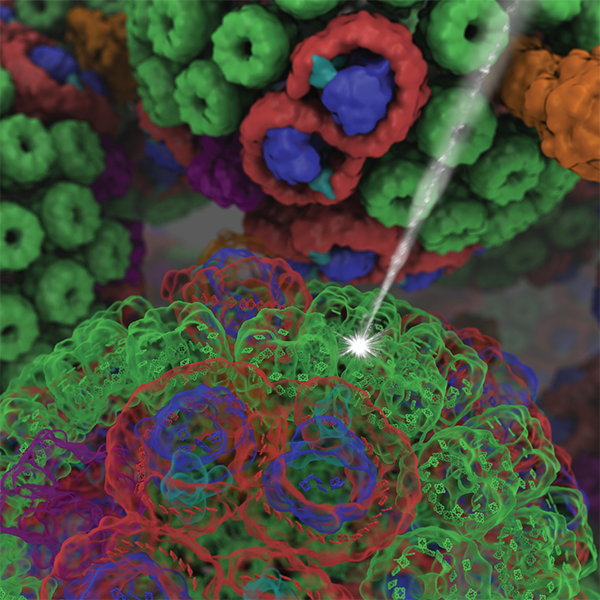
A structural and functional model of bacterial light harvesting at atomic, protein, supramolecular, organelle, and cell scales. The structural model shows an array of chromatophores of the purple bacterium Rhodobacter sphaeroides displaying a dense packing under extreme low light conditions. The energy conversion processes revealed by the model, from light absorption to ATP synthesis, permit the determination of performance metrics for this photosynthetic apparatus such as the energy return on energy investment as well as cell scale observables such as the doubling time of the bacterium for photosynthetic growth. (See article.) See publications below.
A visual summary of some my recent work on light-harvesting in bacteria can be found in the following video, which has won the the Best Movie award in the Supercomputing 2014 Visualization Showcase. (See article.)
Past Outreach Highlights
The supramolecular models featured here were built mainly using Mathematica.
Cover Work
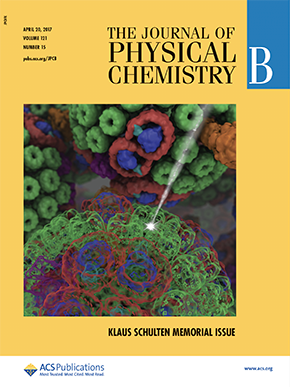
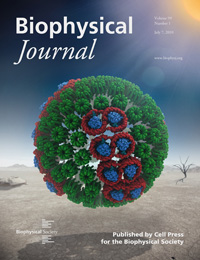
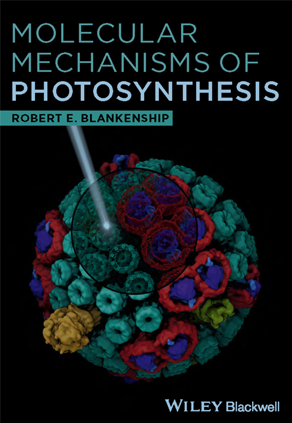
Contact information
address: Beckman Institute, 405 N. Mathews, Urbana, IL 61801.tel: 217-244 1612 fax: 217-244 6078
email: (my first name) at ks.uiuc.edu



